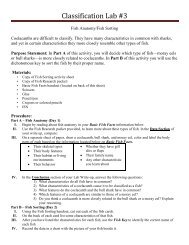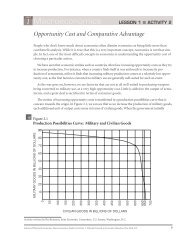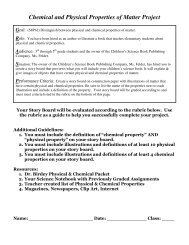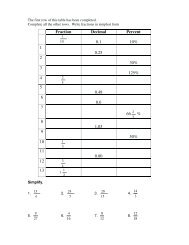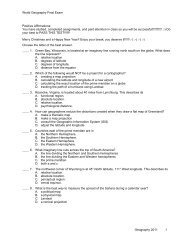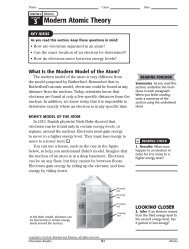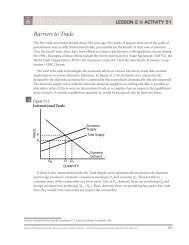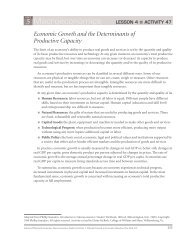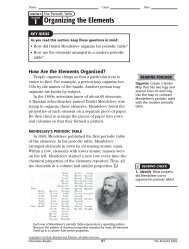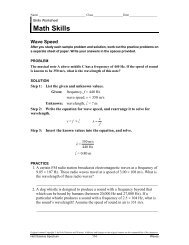Notes on Biogeochemical Cycles and Ecology.pdf
Notes on Biogeochemical Cycles and Ecology.pdf
Notes on Biogeochemical Cycles and Ecology.pdf
Create successful ePaper yourself
Turn your PDF publications into a flip-book with our unique Google optimized e-Paper software.
pool. Water may reside in an ocean for thous<strong>and</strong>s of years, but in a cloud for a fewdays at best. The biotic community includes all living organisms. This communitymay serve as an exchange pool (although for some chemicals like carb<strong>on</strong>, bound in asequoia for a thous<strong>and</strong> years, it may seem more like a reservoir), <strong>and</strong> also serve tomove chemicals from <strong>on</strong>e stage of the cycle to another. For instance, the trees of thetropical rain forest bring water up from the forest floor to be evaporated into theatmosphere. Likewise, coral endosymbi<strong>on</strong>ts take carb<strong>on</strong> from the water <strong>and</strong> turn itinto limest<strong>on</strong>e rock. The energy for most of the transportati<strong>on</strong> of chemicals from <strong>on</strong>eplace to another is provided either by the sun or by the heat released from the mantle<strong>and</strong> core of the Earth.While all inorganic nutrients cycle, we will focus <strong>on</strong> <strong>on</strong>ly 4 of the most importantcycles - water, carb<strong>on</strong> (<strong>and</strong> oxygen), nitrogen, <strong>and</strong> phosphorous.The Water Cycle:




